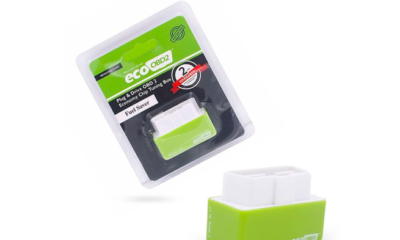World
Cool Comfort, Lower Bills: Finding the Perfect Summer Thermostat Setting

As the summer sun blazes, finding the perfect balance between staying cool and managing your energy bills can feel like a never-ending struggle. The thermostat, often the unsung hero of our comfort, plays a crucial role in this balancing act — setting it too low can lead to sky-high energy costs, while a higher setting might leave you sweltering — but finding that sweet spot doesn’t have to be a guessing game.
“With a bit of knowledge and a few smart adjustments, you can enjoy a comfortably cool home without the shock of high utility bills,” assures Melanie Powers, president of Goodberlet Home Services. Whether you’re dealing with an old manual thermostat or the latest smart model, understanding how to optimize your settings can make a significant difference.
Understanding thermostat basics
Understanding the basics of your thermostat is essential for effective temperature management and energy savings. There are three primary types of thermostats to consider. Manual thermostats are the simplest and most budget-friendly, but they require you to adjust the temperature manually each time and lack the convenience of automated adjustments.
Programmable thermostats, on the other hand, allow you to set specific temperatures for different times of the day or week. This means you can reduce cooling when you’re not at home and increase it before you return, helping to conserve energy and lower bills.
The most advanced option is the smart thermostat, which can be controlled remotely through a smartphone app and often comes with features like learning your schedule and providing energy usage reports. Smart thermostats can even integrate with other smart home devices for improved efficiency.
The thermostat setting you choose affects your energy consumption significantly. “Lower settings make your cooling system work harder, increasing energy use and costs,” shares Powers, “while higher settings reduce energy consumption but may impact comfort if set too high.” Finding the right balance is key to maximizing comfort while minimizing costs.
Ideal thermostat settings for summer
Finding the right thermostat setting for summer is crucial for balancing comfort and energy efficiency. According to the U.S. Department of Energy, “You can save as much as 10 percent a year on heating and cooling by simply turning your thermostat back 7°-10°F for 8 hours a day from its normal setting.” This temperature is warm enough to keep your cooling system from overworking while still being cool enough to maintain comfort during the heat of summer.
“The problem is, you don’t want to overwork your air conditioner because that’s where problems come in,” Powers notes. “AC units are designed to make your homes roughly 20 degrees Fahrenheit cooler than outdoor temperatures, so even if temperatures are in the 90s — say, 98° F — you shouldn’t set your thermostat any lower than 78° F.”
It’s also important to consider factors that influence the ideal setting, such as room size, insulation quality, and outside temperature. Homes with better insulation may remain comfortable at higher thermostat settings, while those with less insulation may require a lower setting to maintain comfort.
By adjusting your thermostat based on these factors and following these guidelines, you can achieve a comfortable indoor environment while keeping your energy bills in check.
Tips for maximizing efficiency
Maximizing your thermostat’s efficiency involves more than just setting it to the right temperature. Here are several strategies to help you get the most out of your cooling system while keeping energy costs down.
Finding the perfect thermostat setting for summer is more than just a matter of comfort; it’s a key factor in effectively managing your energy bills. By setting your thermostat to no more than 20 degrees Fahrenheit lower than the outdoor temperature, as Powers suggests, when you’re at home and adjusting it to higher temperatures while you’re away or asleep, you can strike a balance between staying cool and saving on energy costs. Utilizing programmable and smart thermostat features allows for customized temperature management, further enhancing efficiency.
Additionally, improving your home’s insulation, ensuring proper ventilation, and maintaining your HVAC system are essential steps in maximizing your cooling system’s performance. With these strategies, you can enjoy a comfortably cool home throughout the summer while keeping your energy bills under control.
“Remember,” Powers concludes, “small adjustments and mindful practices can lead to significant savings and contribute to a more sustainable lifestyle.” So, take the time to assess and adjust your thermostat settings — your wallet and the environment will thank you.
World
TRG Chairman Khaishgi and CEO Aslam implicated in $150 million fraud

In a scathing 52-page decision, the Sindh High Court has found that TRG Pakistan’s management was acting fraudulently and that Bermuda-based Greentree Holdings historic and prospective purchase of TRG shares were illegal, fraudulent and oppressive.
The Sindh High Court has further directed TRGP to immediately hold board elections that have been overdue and illegally withheld by the existing board since January 14, 2025.
In the landmark ruling, the Sindh High Court has blocked the attempted takeover of TRG Pakistan Limited by Greentree Holdings, declaring that the shares acquired by Greentree, nearly 30% of TRG’s stock, were unlawfully financed using TRG’s funds in violation of Section 86(2) of the Companies Act 2017.
“Having concluded that the affairs of TRGP are being conducted in an unlawful and fraudulent manner and in a manner oppressive to members such as the Petitioner (Zia Chishti), the case falls for corrective orders under sub-section (2) of section 286 of the Companies Act,” Justice Adnan Iqbal Chaudhry concluded.
The case was brought by TRGP former CEO and founder Pakistani-American technology entrepreneur Zia Chishti against TRG Pakistan, its associate TRG International and TRG International’s wholly-owned shell company Greentree Limited. In addition, the case named AKD Securities for managing Greentree’s illegal tender offer as well as various regulators requiring that they act to perform their regulatory duties.
The case centred around the dispute that shell company Greentree Limited was fraudulently using TRG Pakistan’s own funds to purchase TRG Pakistan’s shares in order to give control to Zia Chishti’s former partners Mohammed Khaishgi, Hasnain Aslam and Pinebridge Investments.
According to the case facts, the Chairman of TRG Pakistan Mohammed Khaishgi and the CEO of TRG Pakistan Hasnain Aslam masterminded the $150 million fraud. They did so together with Hong Kong based fund manager Pinebridge who has two nominees on TRG Pakistan’s board, Mr. John Leone and Mr. Patrick McGinnis.
According to the court papers, Khaishgi, Aslam, Leone, and McGinnis set up a shell company called Greentree which they secretly controlled and from which they started buying up shares of TRG Pakistan. The fraud was that Greentree was using TRG Pakistan’s funds itself. The idea was to give Khaishgi, Aslam, Leone, and McGinnis control over TRG Pakistan even though they owned less than 1% of the company, lawyers of the petitioner told the court.
This was all part of a broader battle for control over TRG Pakistan that is raging between Khaishgi, Aslam, Leone, and McGinnis on one side and TRG Pakistan founder Zia Chishti on the other side. Zia Chishti has been trying to retake control of TRG Pakistan after he was forced to resign in 2021 based on sexual misconduct allegations made by a former employee of his. This year those allegations were shown to be without basis in litigation that Chishti launched in the United Kingdom against The Telegraph newspaper which had printed the allegations. The Telegraph was forced to apologize for 13 separate articles it published about Chishti and paid him damages and legal costs.
After Chishti resigned in 2021, Khaishgi, Aslam, Leone, and McGinnis moved to take total control over TRG Pakistan and its various subsidiaries including TRG International and to block out Chishti. The Sindh High Court’s ruling today has reversed that effort, ruling the scheme fraudulent, illegal, and oppressive.
It now appears that Zia Chishti will take control of TRG Pakistan in short order when elections are called. He and his family are now the largest shareholders with over 30% interest. He is closely followed by companies related to Jahangir Siddiqui & Company which have over a 20% interest. The result appears to be a complete vindication for Zia Chishti and damning for his rivals Aslam, Khaishgi, Leone, and McGinnis who have been ruled to have been conducting a fraud.
TRG Pakistan’s share price declined by over 8% on the news on heavy volume. Market experts say that this was because the tender offer at Rs 75 was gone and that now shares would trade closer to their natural value. Presently the shares are trading at Rs 59 per share.
According to the court ruling, since 2021, shell company Greentree had purchased approximately 30% of TRG shares using $80 million of TRG’s own money, which means that that the directors of TRG Pakistan allowed company assets to be funneled through offshore affiliates TRG International and Greentree for acquiring TRG’s shares – a move deemed both fraudulent and oppressive to minority shareholders. The Sindh High Court also found illegal Greentree’s further attempt to purchase another 35% of TRG shares using another $70 million of TRG’s money in a tender offer.
The ruling is a major victory for the tech entrepreneur Zia Chishti against his former partners and the legal ruling paves the way for him to take control of TRG in a few weeks.
-

 Tech4 years ago
Tech4 years agoEffuel Reviews (2021) – Effuel ECO OBD2 Saves Fuel, and Reduce Gas Cost? Effuel Customer Reviews
-

 Tech6 years ago
Tech6 years agoBosch Power Tools India Launches ‘Cordless Matlab Bosch’ Campaign to Demonstrate the Power of Cordless
-

 Lifestyle6 years ago
Lifestyle6 years agoCatholic Cases App brings Church’s Moral Teachings to Androids and iPhones
-

 Lifestyle4 years ago
Lifestyle4 years agoEast Side Hype x Billionaire Boys Club. Hottest New Streetwear Releases in Utah.
-

 Tech7 years ago
Tech7 years agoCloud Buyers & Investors to Profit in the Future
-

 Lifestyle5 years ago
Lifestyle5 years agoThe Midas of Cosmetic Dermatology: Dr. Simon Ourian
-

 Health6 years ago
Health6 years agoCBDistillery Review: Is it a scam?
-

 Entertainment6 years ago
Entertainment6 years agoAvengers Endgame now Available on 123Movies for Download & Streaming for Free
